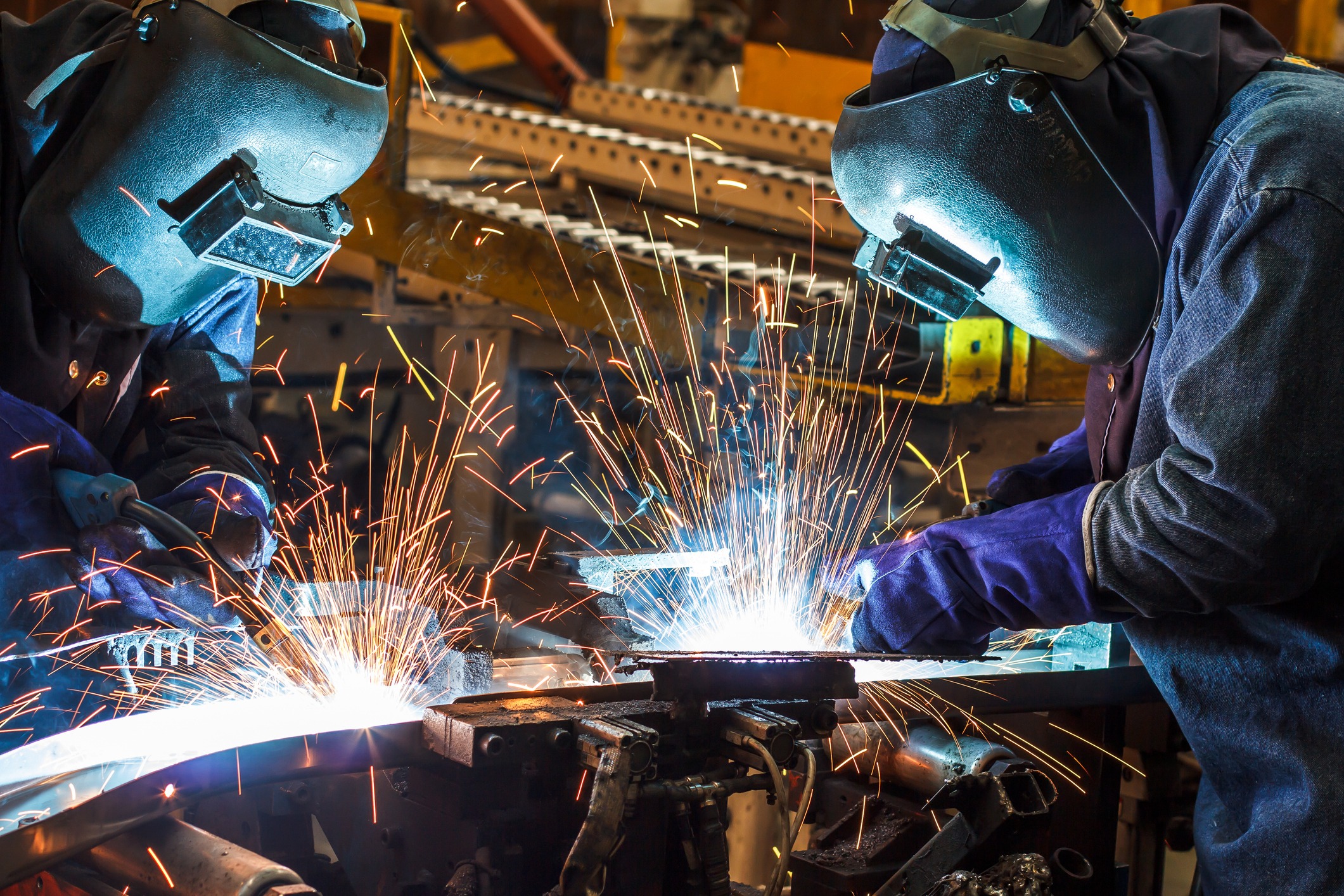What is gas metal arc welding (GMAW)?
Gas metal arc welding, or GMAW for short, which includes MIG and MAG, is an even more recent arc welding process. It was developed in the USA in 1948 and made it to Europe shortly afterwards.
Initially, inert gases or argon were used. These contained only small amounts of oxygen and other active components. This is why the process was initially called SIGMA welding. Sigma stood for "shielded inert gas metal arc".
However, inert gases were expensive and the Soviet Union did not want to bear the associated costs. For this reason, active gases, such as carbon dioxide, were also used there from 1953. This made the development of new wire electrodes possible. These electrodes took into account the fact that the elements of the alloys burned off more with active gases.
The welding wire melts during the welding process. In order not to exhaust it, the wire is continuously fed by a motor. The speed of the motor can be adjusted.
At the same time as feeding the wire and welding, carbon dioxide or an inert gas, for example, is blown over the weld using a nozzle. This prevents oxidation, which would otherwise weaken the seam.
Better heat dissipation is achieved by using active gases. The weld metal is also slightly enriched with carbon. Inert gases in the MIG process serve to keep out atmospheric oxygen. This is particularly important for high-alloy steels, aluminium alloys and non-ferrous metals.
For MAG in active gas welding, either pure CO2 or a mixture of CO2, argon and oxygen is used. This is used to treat the welded joint according to its metallurgical requirements. This is particularly important for high-alloy steels and unalloyed steels.
Why is GMA welding so popular today?
Once you have experienced MSG welding, you will never forget it. This process is the all-rounder among welding methods. It is flexible, strong and ideal for modern requirements. Whether you are dealing with non-alloy steels, aluminium or non-ferrous metals, MIG and MAG provide you with clean seams with plenty of power behind them. Thanks to the shielding gases, the welding point is protected from oxidation and the heat is ideally dissipated. MSG is therefore the multitool in the welding case. It is versatile, efficient and technically advanced.


